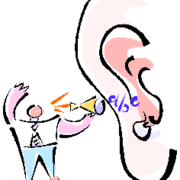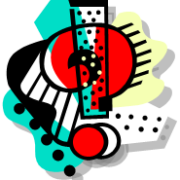Hiring Sales People & Attracting Top Talent!
By Dana Borowka
In this day and age, making the wrong hiring decision can cost you $50,000 to multiples of millions of dollars!! That’s a high price to pay, and it’s a conservative figure when you factor in the emotional pressures of training, evaluation, termination and then starting the hiring process all over again. By refining your hiring process, you can turn hiring into a profitable and successful venture.
Creating an Effective Recruitment Program
There are several steps to creating an effective recruitment program. The first starts with the basics – the job description. Many companies don’t even have job descriptions for their positions and that’s one of many hiring pitfalls. It’s very difficult to describe a position to a candidate, without having it well defined. The next problem with job descriptions is that they are usually not definitive enough. It’s important to detail the expected job performance outcome, and be very specific in what is needed and expected. The job description should have 30-, 60-, 90- and 180-day objectives, so the candidate has a clear understanding what is expected for the job. Be sure to review and update job descriptions regularly, as company needs and expectations for a position are bound to change.
The next step is to define where to recruit candidates or target your recruiting process. Now that you have an idea of what you need and expect for the position, where do you find this treasured person? There are many resources: Referrals, recruiters, ads, college placement centers, .com listings, etc. Of course, referrals are usually one of the best sources for candidates and giving out the job description to business associates and friends may reveal the perfect candidate. When working with recruiters, it is very important to be as specific as possible to avoid your time being wasted with unqualified candidates.
The same is true for ads so that the ad is as definitive as possible. College placement centers are not only good for recruiting college grads, but usually have facilities to list positions that require extensive experience too. They can be especially helpful if they are in close contact with the alumni association.
Resumes, Resumes… Piles of Resumes
Soon in your hiring process, you will be faced with a big pile of resumes. Look for resumes that are specific to your needs and notice the presentation style, which will tell you a great deal about the candidate. It is helpful to decide what the priorities are for the position and look for those first in the resumes. Once you have settled on a few resumes, we suggest the two step approach to interviewing. The first is the telephone interview, which can save you valuable time and effort. Ask the candidate a set of specific questions, such as: Why are you interested in this position? Please describe three key attributes that you have to offer to our company? Give me one significant program that you had an impact on in the last six months? Listen carefully to the candidate to see if the response fits the job description. This process allows the candidate to earn a face-to-face interview.
Interviewing – The Art of Listening
When interviewing in person, it is important to listen and not let emotions take over. The candidate should talk about 80 percent of the interview and the interviewer only 20 percent. The goal for interviewing effectively is to note their thinking patterns, and not get caught up in appearances, impressive schools or companies. During the interview, questions that are more specific are helpful in making successful hiring decisions. Some examples are: What significant impact have they had at three or more companies on their resumes – ask for specifics, percentage of change; Please describe in detail what brought about the change; What was their process, from A to Z? and ask how the  candidate would handle a specific problem that you have seen in the position.
candidate would handle a specific problem that you have seen in the position.
Identifying the Inner Traits of a Candidate & How to Best Manage the Individual
Once a candidate has been selected, then the most difficult part of the hiring process begins – reference checking. Many firms find professional organizations helpful when making background checks. Yet, as the old saying goes, “You never know someone until you work with them, travel with them or live with them”. Through in-depth work style and personality testing, you can reduce the possibility of making a hiring error. An in-depth assessment can identify inner traits of a candidate if the appropriate assessment is selected.
The following are some things to think about when reviewing various work style & personality profiles:
- Training or degrees required for interpretation of the data. Weekend training programs can be problematic since testing and human behavior is a very complex subject. When making hiring or internal decisions, organizations need as much information and understanding as possible as the consequences can be very costly.
- A copy of the resume should be supplied to the testing company to review when discussing the assessment results. We suggest to make sure that the testing company uses resumes as part of the process when reviewing the assessment on a candidate.
- Scale for “Impression Management” to understanding accuracy of results and if someone is trying to ‘fake good’. The questionnaire needs at a minimum of 164 questions to gather enough data for this scale.
- Common warning signs: When a representative uses absolute statements when describing human behavior, like ‘People are all the same’ or ‘People don’t change.’ This will convey what their level of understanding of the human personality is. Or when someone claims that their profile is 98 or 99% accurate, which rarely can be clinically supported. If you hear this, ask how the data was collected.
- Career Matching: Some organizations claim to know what the perfect “sales person” or “secretary” is from a personality perspective. Ask how many careers and occupations have been studied; is the data base validated by outside organizations or only by “applied in-house studies”. “Ideal” is very difficult to define due to the variance of geography, job history and education. What is most important is if the individual has a similar thought pattern that meets the criteria within the job description.
- Number of clinical studies conducted by major universities and there should be multiple studies for validation purposes.
- How long has the profile been used – what is the history.
- How often is the normative database updated and where is the data coming from. (For example, U.S. Census 1990, 2000)
- Cultural bias – is it built into the profile and for which countries.
- Does the profile meet U.S. government employment standards? Has it been reviewed for ADA compliance & gender, culture & racial bias?
- Reading level required (5th grade English, etc).
- Number of profiles administered.
- Number of actual primary scales as defined by the “Big 5” testing standards. Many tests will claim to have more scales than they actually have – this can lead to misrepresentation of data.
- Does the data provide the depth necessary, to understand how an individual is wired inside?
- Validity, reliability and basis.
These are some general questions and if a profile falls short in any one area, we strongly suggest additional research into the accuracy of the data being generated.
Legal Guidelines & Other Important Stuff
A common inquiry from companies and organizations is about the legal guidelines in providing assessments to candidates. Since industries vary, it is always best to check with a trade association or a legal representative. The general rule is that a test or any set of hiring questions needs to be administered to all final candidates in order to assure that discrimination is not taking place. More information may be found at the EEOC website, in the Disability-Related Inquiries and Medical Examinations of Employees section.
Another question is how do new hires usually feel about taking an in-depth work style assessment. It shows that a company is serious about who they hire. If the company presents the testing program as a method of assuring both parties that they are making the right decision, the individual usually responds very well. The bottom line is that hopefully turnover is greatly reduced.
An in-depth assessment can be very helpful for personnel development and succession planning. As a hiring tool, they can be used to develop additional questions for interviewing and confirming the interviewer’s intuition that might be overlooked. This process gains more reliable and accurate data in order to effectively manage individuals to make hiring and personnel decisions a win-win for everyone.
If you are a hiring manager and would like to see a sample of an in-depth work style and personality profile or get more information, please contact Dana Borowka at Lighthouse Consulting Services, LLC, (310) 453-6556, extension 403 or email at dana@lighthouseconsulting.com.
The key to onboarding is to understand what the individual needs in order to be successful. The information collected from an in-depth work style assessment can be used as a caching and management tool in order to reduce the learning curve and help the individual hit the ground running!
As you have seen, a successful hiring program requires many components that work together to provide the needed information for difficult personnel decisions. Combining a  well-defined job description, targeted recruiting and focused interviewing with an effective in-depth work style and personality evaluation program, turns hiring into a profitable and rewarding process.
well-defined job description, targeted recruiting and focused interviewing with an effective in-depth work style and personality evaluation program, turns hiring into a profitable and rewarding process.
Permission is needed from Lighthouse Consulting Services, LLC to reproduce any portion provided in this article. © 2014 This information contained in this article is not meant to be a substitute for professional counseling.
Dana Borowka, MA, CEO of Lighthouse Consulting Services, LLC and his organization constantly remain focused on their mission statement – “To bring effective insight to your organization”. They do this through the use of in-depth work style assessments to raise the hiring bar so companies select the right people to reduce hiring and management errors. They also have a full service consulting division that provides domestic and international interpersonal coaching, executive onboarding, leadership training, global options for expanding your business, sales and customer service training, operational productivity improvement, 360s and employee surveys as well as a variety of workshops. Dana has over 25 years of business consulting experience and is a nationally renowned speaker, radio and TV personality on many topics. He provides workshops on hiring, managing for the future, and techniques to improve interpersonal communications that have a proven ROI. He is the co-author of the books, “Cracking the Personality Code” and “Cracking the Business Code”. To order the books, please visit www.lighthouseconsulting.com.
If you would like additional information on this topic or others, please contact your Human Resources department or Lighthouse Consulting Services LLC, 3130 Wilshire Blvd., Suite 550, Santa Monica, CA 90403, (310) 453-6556, dana@lighthouseconsulting.com & our website: www.lighthouseconsulting.com.
Lighthouse Consulting Services, LLC provides a variety of services, including in-depth work style assessments for new hires & staff development, team building, interpersonal & communication training, career guidance & transition, conflict management, 360s, workshops, and executive & employee coaching. Other areas of expertise: Executive on boarding for success, leadership training for the 21st century, exploring global options for expanding your business, sales and customer service training and operational productivity improvement.








